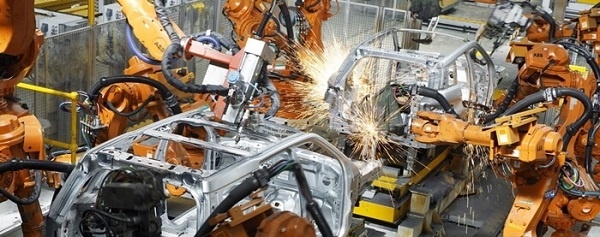The customer is always right, and is always changing. Consumer-driven markets are facing pressure to introduce more products quicker and with more specialisations. Manufacturers must adapt. They must evolve processes quickly, efficiently, and cost-effectively. Meeting consumer demands is not a place for playing “catch up”. First to market with a product innovation often wins the market and dominates the mindshare of the buyer.
Is it possible to successfully fulfil customer expectations without sacrificing line efficiency and enduring the high cost of warehousing multiple variations of products, models, components, and parts?

Manufacturing flexibility is key
The answer is “yes.” Flexibility is key. Being predictive, responsive, and decisive in actions are other attributes that manufacturers with successful on-demand fulfilment capabilities share. They are finding ways to postpone final product customisation until much later in the supply chain and much closer to the point of retail sale.
This involves keeping only basic products in domestic warehouses and not making them retail-ready until retailers identify demand trends. These buying predictions are translated into forecasts and then communicated to the manufacturers in the form of an order. Sometimes this process of identifying a consumer preference and fulfilling an order can span as little as three days. A response time of five to seven days is not uncommon.
Read more: 5 key factors to overcome manufacturing operational challenges and complexity
For manufacturers, this means delaying assembling the final products until retailers have successfully “sensed the shelf” and predicted a need. The last minute changes to the product could range from installing special software, changing product colours and features, or including supplemental devices like extra power cords, printers, etc.
Companies, therefore, must be able to deploy build of materials within their domestic warehouses. Detailed pick, pack, and ship capabilities are also important for fulfilling complex orders.
Most importantly, the manufacturer needs a strategy and solid plan for ways to execute builds of materials and customise a wider variety of products on a smaller lot basis. Success depends on the ability to respond quickly to the retail environment’s short order and delivery cycles.
Part of that plan involves having the right cellular manufacturing layout for the warehouse, people being trained and cross-trained on multiple tasks to perform product enhancements, and ultimately a technology platform that helps all of these steps to happen in an organised, consistent, and measurable way.

Modern ERP technology that supports product specialisation in manufacturing
Manufacturers are turning to ERP technology to help them address these changing business and process needs—and do it in a cost effective manner. Without the right ERP tools, this evolving business model would be highly time consuming and labour intensive, and would require a large capital investment for the various parts and components.
Fulfilling small specialised orders defies all of the cost-effective strategies of mass manufacturing where larger volume and scale provide the savings needed to generate profitability. So, how can a manufacturer retain productivity and cost efficiency, despite this deviation from the mass production concept? The answer lies in the use of ERP technology to automate, streamline, and escalate activities.
Read more: Challenges in Selecting ERP Solutions for Manufacturing
Manufacturers heavily relying on assembly postponement or product specialisation seek ERP solutions that allow them to monitor complex processes and products—down to the component level—with precision.
From tracking inventories of parts—based on individual serial numbers and the likely combination of how they will be used—to configuration specifications and compliance mandates, the ERP solution must be able to provide users with contextual data to speed decisions and process flow. The system has to help the user anticipate the next step and ask the right questions, reducing the possibility of error or oversight. With a large volume of possible configurations, details cannot be left to memory—or a simple clipboard.
Analytics also play an important role in the ability to predict needs and maintain appropriate inventory levels. Advanced business intelligence helps manufacturers identify trends and drill into details of production achievements.
Read more: Data Analytics for Manufacturing: the Tesla’s Case Study
For communicating with subcontractors, vendors and the supply chain, online portals, mobility solutions, and collaboration tools speed data sharing and allow the designers, estimators, and engineers to connect in meaningful dialogue. Consumers can also enter their customer orders and check on delivery status.
 English
English  Vietnamese
Vietnamese 


